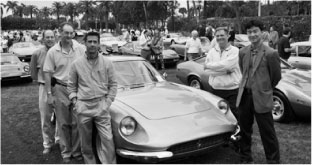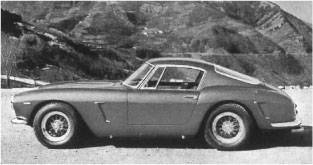More Little Details on the Green GTC
October 19, 2024
Little chrome pieces came back from the plater that I could install on the Green Ferrari 330 GTC that’s headed to Cavallino. This little emblem goes on the gas cap and the chrome was polished away from careless paint polishers. The new plating will look so much nicer mounted on the gas cap lid!

You can see the shifter and gated shifter plate installed in the lower right of the picture, but I still had to take to take some things apart before the interior could go back together. The speedo and tachometer had a haze on the lenses, and was on the inside of the gauge. Getting them out so I could disassemble the gauge for cleaning required removing more than one gauge so I could access the clamps, electrical connections, and drive cables.

With the gauge out of the car, I carefully pried the little tabs back just enough to release the body of the gauge. These have a tendency to break off, so moving them as little as possible to get the job done is paramount.

Cleaning the back side of the glass was the easy part, but they look a lot better, and may keep a judge from deducting points because we had cloudy gauges!

I stripped and refurbished the steering wheel so reinstalled all the restored pieces. The interior is really coming together!











































